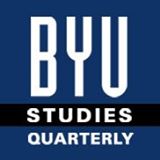BYU Studies

Keywords
Mormon studies, photography, First Presidency, church leadership
Abstract
Members of The Church of Jesus Christ of Latter-day Saints witnessed momentous events that directly affected them in 1893. Along with other Americans, the Latter-day Saints in the western United States experienced the terrible effects of the Panic of 1893, one of the worst financial depressions in the nation’s history. The early signs of the economic decline appeared in February 1893 when receivers were appointed for the debt-ridden Philadelphia and Reading Railroad. Soon thereafter, stock prices plummeted, more than fifteen thousand businesses failed, people walked away from their farms and homes unable to pay their mortgages, unemployment rates hit as high as 43 percent in some states, and by the end of the year more than four thousand banks had closed. Despite the economic crisis that gripped the nation, 1893 was a year of celebration for Church members as they dedicated the Salt Lake temple, built a resort at Saltair on the Great Salt Lake, and participated in the Chicago World’s Fair. Finally, by the end of 1893, the way began to open for Utah Territory to become a state. Each of these events made 1893 a significant year in the history of the Church, which was undergoing a cultural shift after the 1890 Manifesto.
Recommended Citation
Holzapfel, Richard Neitzel and Wells, Thomas R.
(2018)
"Photographs of the First Presidency, April 6, 1893,"
BYU Studies: Vol. 57:
Iss.
4, Article 6.
Available at:
https://scholarsarchive.byu.edu/byusq/vol57/iss4/6
